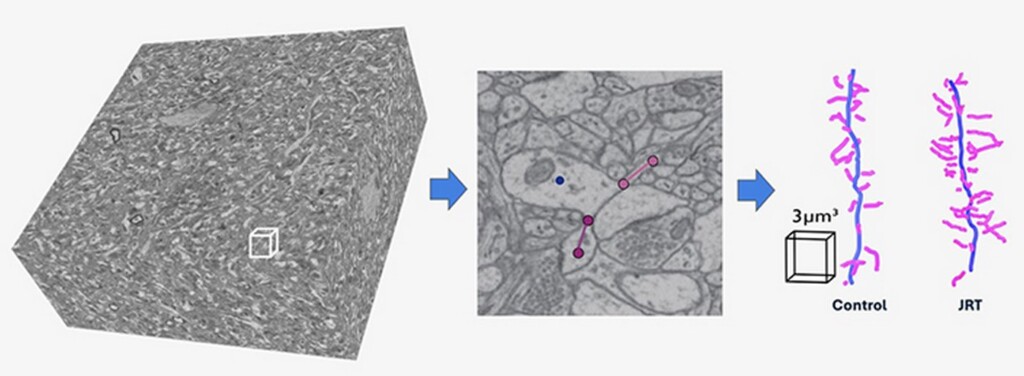With its ability to aid in enhancing neuroplasticity, the famous hallucinogenic compound LSD has been theorized as a treatment option for neurological disorders like cognitive decline and schizophrenia.
One wouldn’t want to dose a schizophrenic with LSD, but following the synthesis of a new molecule based on LSD at a laboratory in California, they may never need to.
JRT is identical to LSD within a margin of two atoms, and it was created at the Univ. of California Davis to solve existing shortages of potent neurotherapeutics for use in treating schizophrenia and cognitive decline.
A study that tested JRT in mice found that it could elicit a 46% growth in the density of dendritic spines on the exteriors of neurons. These organelles work a little like antennae, and receive input from synapses, or the connections between neurons that drive cognitive function.
Synapses were also found to be increased under the influence of JRT—by 18% in the pre-frontal cortex.
However unlike LSD, there was no indication whatsoever that the mice were undergoing hallucinogenic effects, nor did it promote gene expression associated with schizophrenia, something that is amplified in LSD use.
“Basically, what we did here is a tire rotation,” said corresponding author David E. Olson, director of the Institute for Psychedelics and Neurotherapeutics at UC Davis. “By just transposing two atoms in LSD, we significantly improved JRT’s selectivity profile and reduced its hallucinogenic potential.”
“The development of JRT emphasizes that we can use psychedelics like LSD as starting points to make better medicines—medicines that can be used in patient populations where psychedelic use is precluded.”
ALSO CHECK OUT: Psychedelic Drugs May Be Able to Treat Brain Injuries, Stimulating New Neurons to Replace Impaired Ones
The work was overseen by Uri Manor, Assistant Professor at UC San Diego School of Biological Sciences, whose lab provided state-of-the-art electron microscopy of the mice’s brains.
JRT produced robust anti-depressant effects, with it being around 100-fold more potent than ketamine, the state-of-the-art fast-acting anti-depressant. It also promoted cognitive flexibility, successfully addressing deficits in reversal learning that are associated with schizophrenia.
INTEREST IN PSYCHEDELICS: Another Study Shows African Psychedelic Plant Ibogaine Treats Traumatic Brain Injury in Vets With ‘Dramatic’ Results
Existing pharmaceutical options for schizophrenia, the authors explain, come with major side effects and are only administered as a last resort.
Though the principle target of the study was schizophrenia, the improvement in neuroplasticity could have therapeutic effects in other neuropsychiatric and neurodegenerative diseases characterized by synaptic loss and brain atrophy, something the team is currently testing more and which represents the next phase of this exciting research.
SHARE This Exciting Development In Psychedelic-Based Neuropharmaceuticals…
The post LSD Tweaked to Harness Therapeutic Power for Mental Health Without Hallucinogenic Effects appeared first on World Online.

